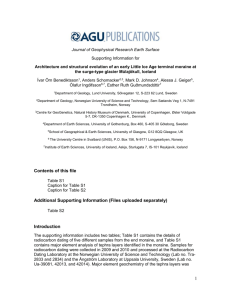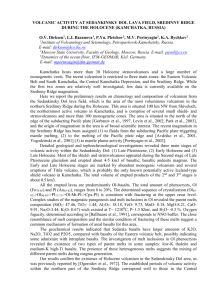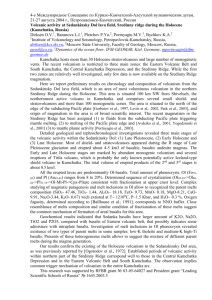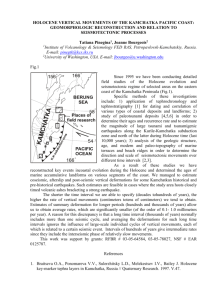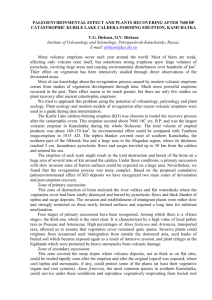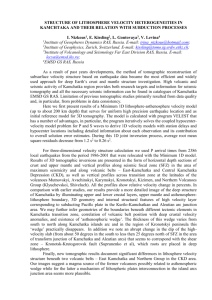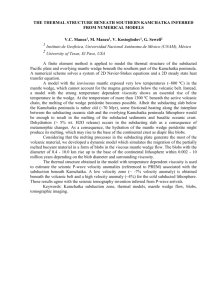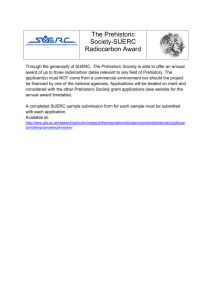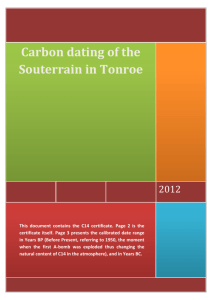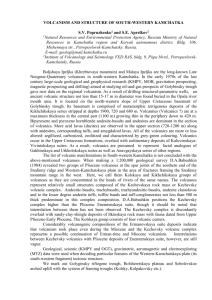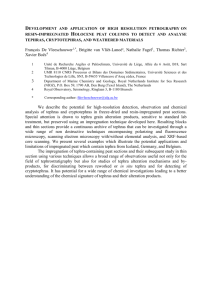14c timing of volcanic and paleoseismic events in kamchatka
advertisement
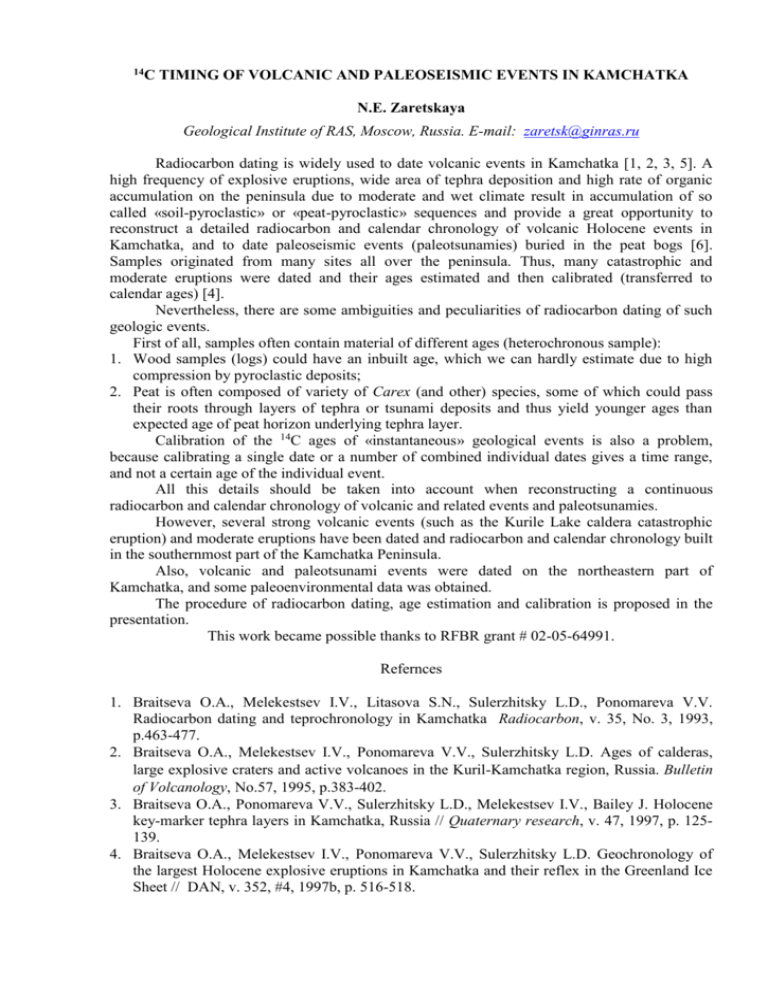
14C TIMING OF VOLCANIC AND PALEOSEISMIC EVENTS IN KAMCHATKA N.E. Zaretskaya Geological Institute of RAS, Moscow, Russia. E-mail: zaretsk@ginras.ru Radiocarbon dating is widely used to date volcanic events in Kamchatka [1, 2, 3, 5]. A high frequency of explosive eruptions, wide area of tephra deposition and high rate of organic accumulation on the peninsula due to moderate and wet climate result in accumulation of so called «soil-pyroclastic» or «peat-pyroclastic» sequences and provide a great opportunity to reconstruct a detailed radiocarbon and calendar chronology of volcanic Holocene events in Kamchatka, and to date paleoseismic events (paleotsunamies) buried in the peat bogs [6]. Samples originated from many sites all over the peninsula. Thus, many catastrophic and moderate eruptions were dated and their ages estimated and then calibrated (transferred to calendar ages) [4]. Nevertheless, there are some ambiguities and peculiarities of radiocarbon dating of such geologic events. First of all, samples often contain material of different ages (heterochronous sample): 1. Wood samples (logs) could have an inbuilt age, which we can hardly estimate due to high compression by pyroclastic deposits; 2. Peat is often composed of variety of Carex (and other) species, some of which could pass their roots through layers of tephra or tsunami deposits and thus yield younger ages than expected age of peat horizon underlying tephra layer. Calibration of the 14C ages of «instantaneous» geological events is also a problem, because calibrating a single date or a number of combined individual dates gives a time range, and not a certain age of the individual event. All this details should be taken into account when reconstructing a continuous radiocarbon and calendar chronology of volcanic and related events and paleotsunamies. However, several strong volcanic events (such as the Kurile Lake caldera catastrophic eruption) and moderate eruptions have been dated and radiocarbon and calendar chronology built in the southernmost part of the Kamchatka Peninsula. Also, volcanic and paleotsunami events were dated on the northeastern part of Kamchatka, and some paleoenvironmental data was obtained. The procedure of radiocarbon dating, age estimation and calibration is proposed in the presentation. This work became possible thanks to RFBR grant # 02-05-64991. Refernces 1. Braitseva O.A., Melekestsev I.V. Litasova S.N., Sulerzhitsky L.D., Ponomareva V.V. Radiocarbon dating and teprochronology in Kamchatka Radiocarbon, v. 35, No. 3, 1993, p.463-477. 2. Braitseva O.A. Melekestsev I.V. Ponomareva V.V., Sulerzhitsky L.D. Ages of calderas large explosive craters and active volcanoes in the Kuril-Kamchatka region Russia. Bulletin of Volcanology No.57 1995, p.383-402. 3. Braitseva O.A. Ponomareva V.V., Sulerzhitsky L.D., Melekestsev I.V. Bailey J. Holocene key-marker tephra layers in Kamchatka, Russia // Quaternary research, v. 47, 1997, p. 125139. 4. Braitseva O.A. Melekestsev I.V. Ponomareva V.V., Sulerzhitsky L.D. Geochronology of the largest Holocene explosive eruptions in Kamchatka and their reflex in the Greenland Ice Sheet // DAN, v. 352, #4, 1997b, p. 516-518. 5. Zaretskaia N.E., Ponomareva V.V., Sulerzhitsky L.D., Zhilin M.G. Radiocarbon studies of peat bogs: an investigation of South Kamchatka volcanoes and Upper Volga archeological sites // Radiocarbon, v.43, n.2, 2001, p.535-543. 6. Zaretskaya N.E., Ponomareva V.V., Uspenskaia O.N., Bliakharchuk T.A., Gunova V.S. Paleoenvironmental history of the Northeastern Kamchatka coastal area in the second half of the Holocene // PAGES meeting on «High Lattitude Paleoenvironment», Moscow, 2002.
